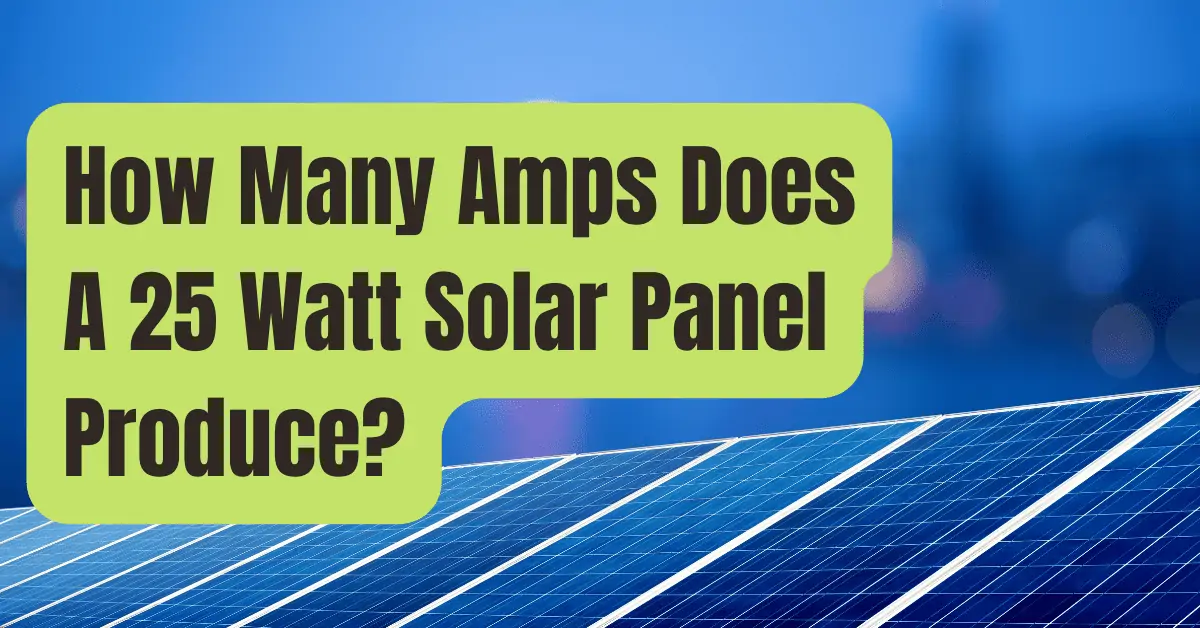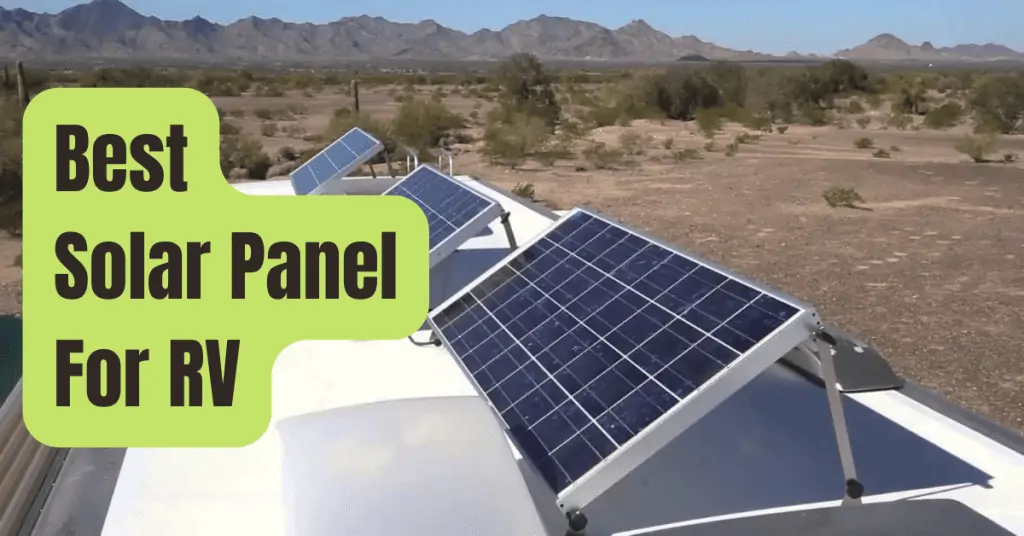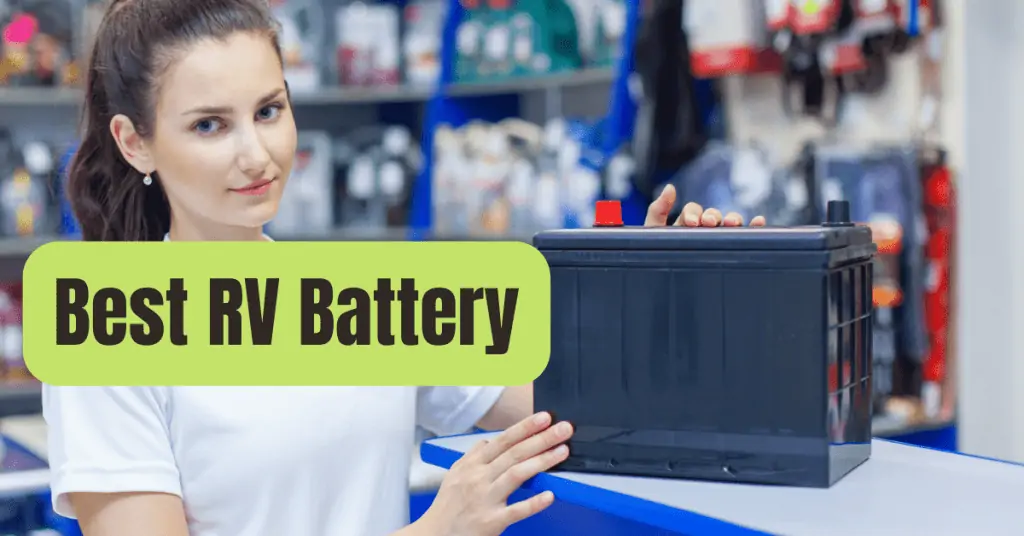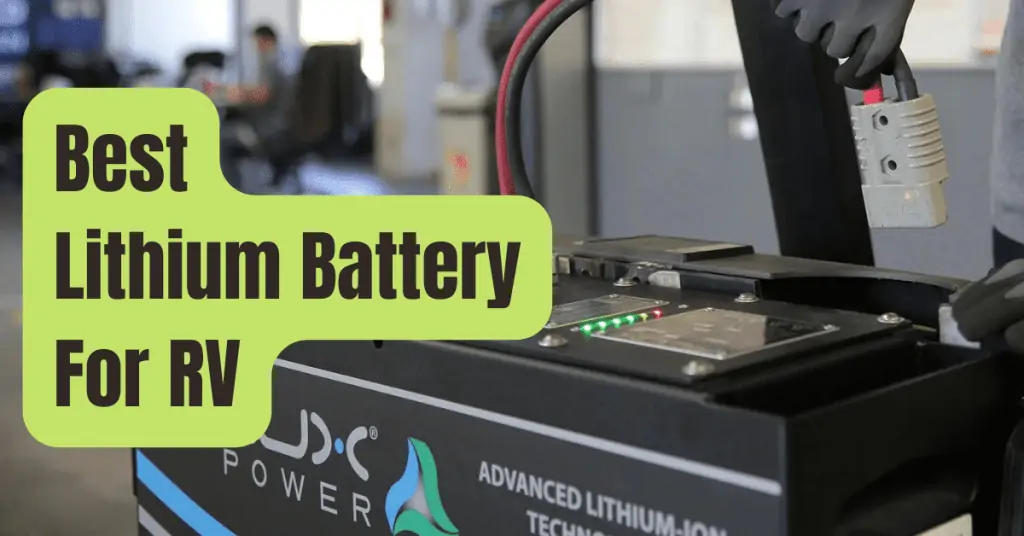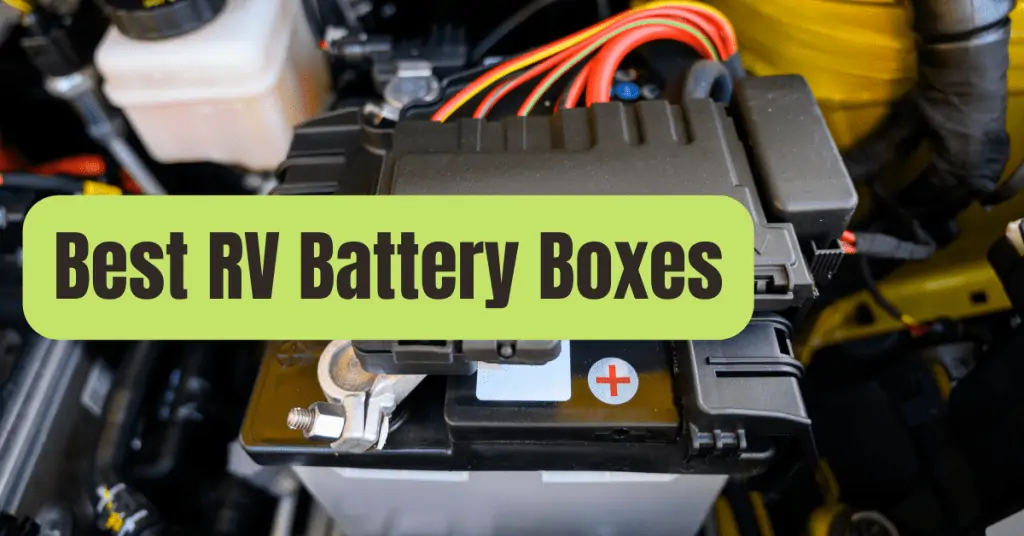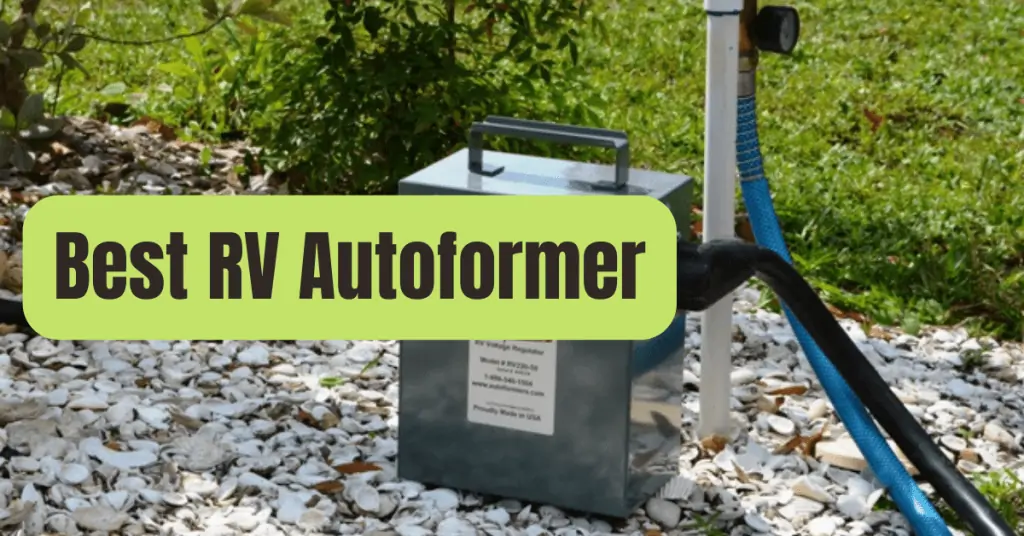A 25-watt solar panel may not seem like much, but depending on the battery’s capacity, even tiny solar panels might collect enough solar energy to fully charge the battery in a day or less.
Your 25-watt solar panel is the ideal portable solar power source since it can recharge your battery bank during the day so that you may use it at night.
Continue reading to find out more about how much solar energy a tiny solar panel can produce.
Solar Panel of 25 Watts
Even while a 25-watt solar panel cannot run major appliances, it is still quite useful.
It typically measures 20 inches by 14 inches and weighs under 7 pounds.
Your 25-watt solar panel is thus fairly portable.
A 25-watt flexible, semi-flexible, or folding solar panel may be available in certain circumstances, making it even simpler to carry.
It is the ideal tool for recharging your battery bank and lowering the energy consumption of your small appliances since it has an optimal operating voltage of 17.5 V and an optimal operating current of 1.43 A.
Instead of attaching items to your solar panel, you may use renewable energy to directly charge your batteries.
Your lead-acid batteries and other deep-cycle batteries may be charged with solar energy and used later with a voltage regulator and a reliable solar charge controller.
Your energy demands will determine the size of the battery, but the size and maximum power output of your solar panel will determine how long it will take for your batteries to charge completely.
Detailed Information about a 25 Watt Solar Panel
You may find there are many different solar panel types if you are shopping for tiny solar panels to use to recharge your lead-acid or lithium-ion batteries.
It might take a lot of effort to choose the best one and compare their specifications to meet your demands, so we scoured the market for popular solar panels you could use in your RV, cottage, or while hiking.
Here are the technical specifications (electrical and mechanical) for the top five solar panels available right now.
| Electrical Specs | Acopower 25-watt polycrystalline module | ECO-WORTHY 25W Solar Panel | SunJack 25 Watt Monocrystalline Solar Panel | MOOLSUN 25W Solar Panel Power | Topsolar 20W solar panel |
|---|---|---|---|---|---|
| Maximum Power | 25 W | 25 W | 25 W | 25 W | 25 W |
| Maximum System Voltage | 18 V | 18 V | Two 5V/2A USB-A ports | 18 V | 18 V |
| Open-Circuit Voltage | 22V | 22.4V | N/A | 21.6V | N/A |
| Optimum Operating Voltage | 17.5V | 12V | 5V | 5.5A | 12V |
| Optimum Operating Current | 1.43A | 1.11A | 2 X 2A | 3A | 1.11A |
| Short-Circuit Current | 1.54A | 1.4A | N/A | N/A | N/A |
The mechanical details of this solar panel kit are listed below.
| Mechanical Specs | Acopower 25-watt polycrystalline module | ECO-WORTHY 25W Solar Panel | SunJack 25 Watt Monocrystalline Solar Panel | MOOLSUN 25W Solar Panel Power | Topsolar 20W solar panel |
|---|---|---|---|---|---|
| Weight | 7.05 lbs | 4.54 lbs | 3.0 lbs | 5.84 lbs | 4.8 lbs |
| Dimensions | 20.1 x 14.2 x 0.8 in | 16.5 x 12.6 x 0.67 in | 24.5 x 12.5 x 1 in | 25 x 13.78 x 1 in | 17.13 x 13.86 x 2.32 in |
| Material | Polycrystalline | Monocrystalline | Monocrystalline | Monocrystalline | Monocrystalline |
| Flexibility | Non-Flexible | Non-Flexible | Foldable | Non-Flexible | Flexible |
| Warranty | 5 year warranty | N/A | 1 year warranty | N/A | N/A |
Additional Terminologies
It may be difficult to understand the language used in the table, so we’ve broken it down for you here:
- Maximum Power – This is the amount of solar energy that, in the ideal situation of direct sunlight hitting the panel at a 90-degree angle, your solar panels can generate in a single hour.
- Maximum System Voltage – the highest detectable voltage between any two conductors or between a conductor and the earth. It is often greater than the recommended optimal voltage since it may not always be possible to achieve optimum voltage if the maximum voltage were used.
- Open-Circuit Voltage – the highest voltage that a single solar cell can produce if no current flows through the panel.
- Optimum Operating Voltage – Under ideal circumstances, this is the voltage at which your solar panel will run the most of the time.
- Optimum Operating Current – the current (in Amps) that your solar panel can provide in ideal circumstances to power your gadgets.
- Short-Circuit Current – the current that a solar panel may generate when no load is applied to it and when it is short-circuited.
What Can A 25 Watt Solar Panel Power?
Small solar panels may be used for a variety of purposes.
You can utilize your solar panel for the following things, depending on how much electricity you require:
- Courtyard illumination
- A compact cabin with low-voltage electricity, an RV, a caravan, etc (with a good voltage regulator),
- Greenhouse illumination improves agricultural output and accelerates plant development.
- Your home’s low-voltage lighting system (think LED lights),
- For use as a source of transportable solar energy when trekking or visiting locations without an electrical grid, and
- You may utilize them to lower your typical power use.
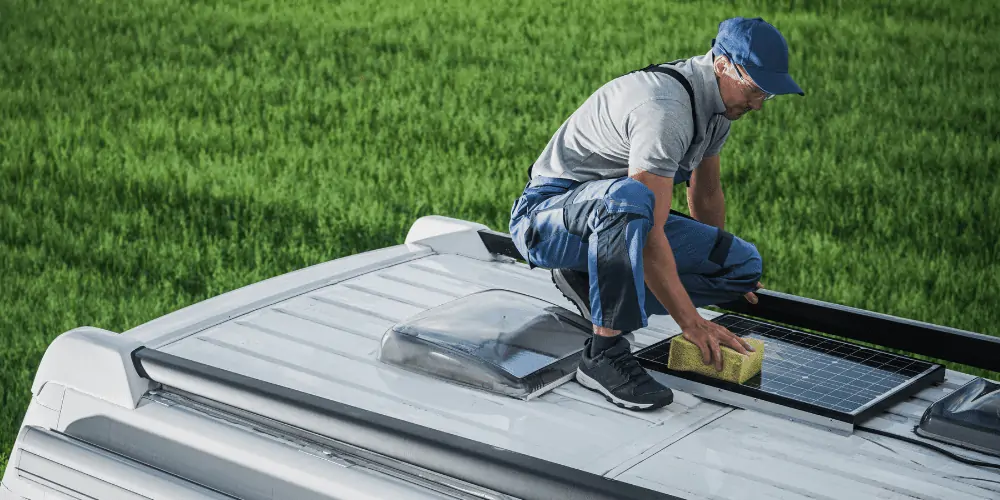
#1. RV
A 25-watt system can partially power your recreational vehicle.
Your 25-watt solar panel may be used to charge deep-cycle batteries, which can then be used to power lights, a small TV, a water pump, or even a refrigerator if you don’t require a heating or water heating system.
As a result, you use less gasoline because your solar panels provide energy that you would otherwise acquire from a generator.
#2. Roadway Lighting
Solar street lights are being erected in numerous communities as a part of their zero-emissions targets.
Grid-connected equipment that produce energy during the day and utilize it at night may be used to power these intelligent street lighting.
In addition to saving towns money, they also reduce pollutants.
#3. Little Cabin
A solar panel and solar charge controller may also be used to power a tiny cabin.
You may conserve a lot of power and utilize it when you need it by adding a battery pack.
Depending on how many panels you have put and how much battery power you have, you can use solar electricity to run a fridge, a TV, a set of low-voltage lights, and a small water pump.
#4. Boat
You could also be able to power certain gadgets in your boat if you size your solar panels, lead-acid battery, solar charge controller, and solar inverter appropriately.
Even while no solar panel can provide enough electricity to move your boat, solar energy may be used to operate your lights and refrigerator effectively.
Always have a backup power supply on hand since your 25 watt solar panels will lose the majority of their power output over a longer period of gloomy days.
A 25-Watt Solar Panel’s Operation
The operation of your 25-watt solar panel is the same as that of solar panels of other sizes.
Your solar panel’s solar cells utilize photons from the sun to excite electrons and cause them to move when they are in direct sunlight.
Direct current is used here.
It is at this point that your solar inverter comes into play.
This fantastic device transforms direct electricity into alternating current, which is then used to power your batteries or appliances.
How Can I Determine My Solar Needs?
If you make an effort to comprehend your solar demands, you can run into trouble.
It is not a problem to know precisely how much energy your appliances use; the problem is knowing how long you use them every day.
Another problem that is difficult to quantify is the discrepancy between the nominal power and the actual power utilized since everyone’s demands are so unique.
The best thing to do is to regularly check your battery level.
View the amount of solar energy that reached your batteries and the total amount of energy you’ve used each day.
Your batteries may not even be able to keep you going for a single day, depending on their capacity, while others could.
You can determine your overall energy usage after you are aware of the amount of power you draw from your batteries (based on measurements taken over a number of days).
#1. Knowing the Capacity of Your Solar Panels
Every solar panel has a limit to how much power it can produce.
It is usually a good idea to add at least 10% to the required capacity when estimating your energy use and translating it to the number of solar panels you need.
You will have the additional power and battery capacity you could sorely need on overcast days thanks to this.
#2. Understanding The Actual Solar Power Produced
You must be aware of your solar panels’ maximum output in order to compute the real amount of solar electricity produced.
It’s simple: your 25-watt solar panel can produce a maximum of 25 watts for each hour of sunshine.
The US has six sunny hours on average every day, which amounts to 150 watt-hours of solar energy per day.
#3. Understanding Your Energy Use
As we’ve previously shown, it might be challenging to estimate your energy use.
However, doing the calculation is quite simple if you want the sun to power your cabin or RV.
Just look at the few appliances and lights you may have and pay attention to their power usage.
Your equipment varies based on the task it does.
Generally speaking, lights use less energy than a TV, which in turn uses less energy than a toaster.
With a 25 watt solar panel and six hours of sunshine, a 7 watt LED light can operate for 21 hours.
#4. Match Your Energy Use To The Solar Power Generated.
It is preferable to get as many solar panels as you need to cover 100 percent of your typical daily solar power demand if you want to go completely solar.
As a result, you should tally up the energy your appliances consume to estimate how much electricity they need each day, and then purchase whatever many solar panels are required to meet those demands.
Your entire monthly consumption will be shown on your energy bill, for example, if you reside in a home and are linked to the power grid.
Benefits and Drawbacks of a 25-Watt Solar Module
Using a modest solar panel to charge your batteries or to power your electronics has both benefits and drawbacks.
Find out what they are in detail by reading on.
An advantage of a 25-watt solar module is as follows:
- Great performance on a sunny day,
- The tiny size’s convenience for placing,
- Voltage that is optimized for 12V power systems,
- Portability and lightness.
The drawbacks of a little solar panel are as follows:
- 25 watts is a fairly little amount of power,
- When compared to huge solar panels, the cost per watt of electricity generated is high.
- Has not inserted a blocking diode,
- Doesn’t have a solar charging controller,
- Extra solar inverter is necessary.
Can 25-Watt Panels Be Connected to One Another?
You are allowed to connect an unlimited number of 25-watt panels.
It’s crucial to let a professional connect the panels for you if you want to build a customized solar array for your energy requirements.
For the security of your solar system, it is crucial to understand the proper solar charge controller, solar inverter, and panel wiring techniques.
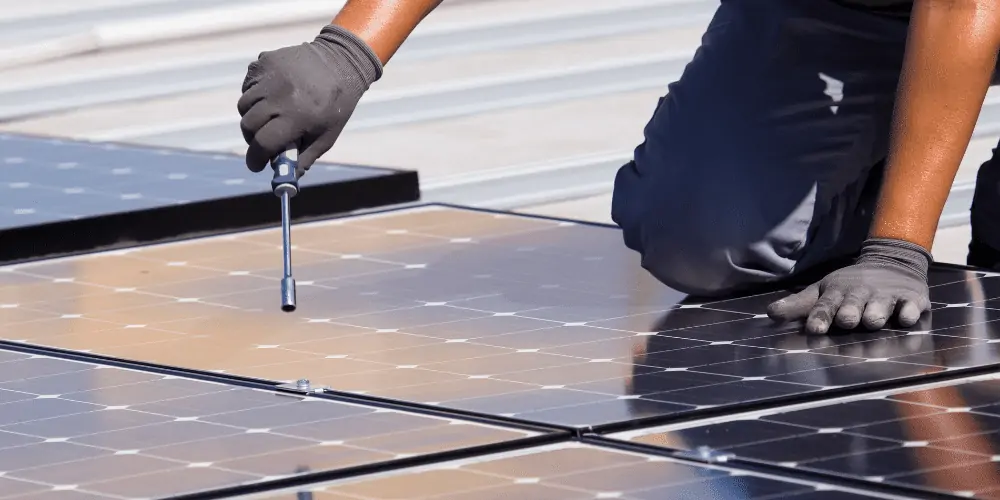
FAQs
How Much Power Is Produced By A 25-Watt Solar Panel?
150 watt-hours may be generated by a 25 watt solar panel during the course of six hours.
The same applies to a 50-watt panel, which may provide 300 watt-hours of useful power in a single day.
You may anticipate producing more electricity in the summer than in the winter since the amount of energy created rises with the length of the day.
When Charging A 12V Battery With A 25-Watt Solar Panel, How Long Does It Take?
The battery’s capacity determines how long it takes for a 25-watt panel to fully charge a 12 V battery.
A 25-watt panel generates 25 watts at 12 V, which equates to around 2 Amps of stored energy.
It takes your panel that long to fully charge a 12 V, 12 Amp battery with six hours of sunshine.
What Amps Can A 25 Watt Solar Panel Produce?
Use this equation to determine how many amps your 25-watt panel generates:
Voltage x Amps = Maximum Panel Power Output
12.0 volts x 25 watts Equals 2.08 amps
A 25-watt solar panel may thus provide around 2 Amps of electricity.
Is A Charge Controller Necessary For A 25 Watt Solar Panel?
Yes, a charge controller is necessary for your 25 watt panel.
Charge controllers are used to balance out any peaks in the generation of power.
Additionally, they shield your solar battery and lengthen its lifespan.
Ask a professional for advice if you are unsure of what charge controller you may need.
The improper controller selection might permanently harm your battery pack.
Does It Pay Off?
A 25-watt solar panel may not seem like much, but it has enough power to partially power your lead-acid battery or any additional batteries you could have placed as your solar power pack.
Toasters, tiny water pumps, LED lights, and other energy-efficient appliances may all be powered by properly connecting the solar panel to the inverter and charge controller.
For the majority of off-grid applications, a 25-watt solar panel is the ideal choice since it may reduce costs and boost the effectiveness of your home, RV, or boat.

